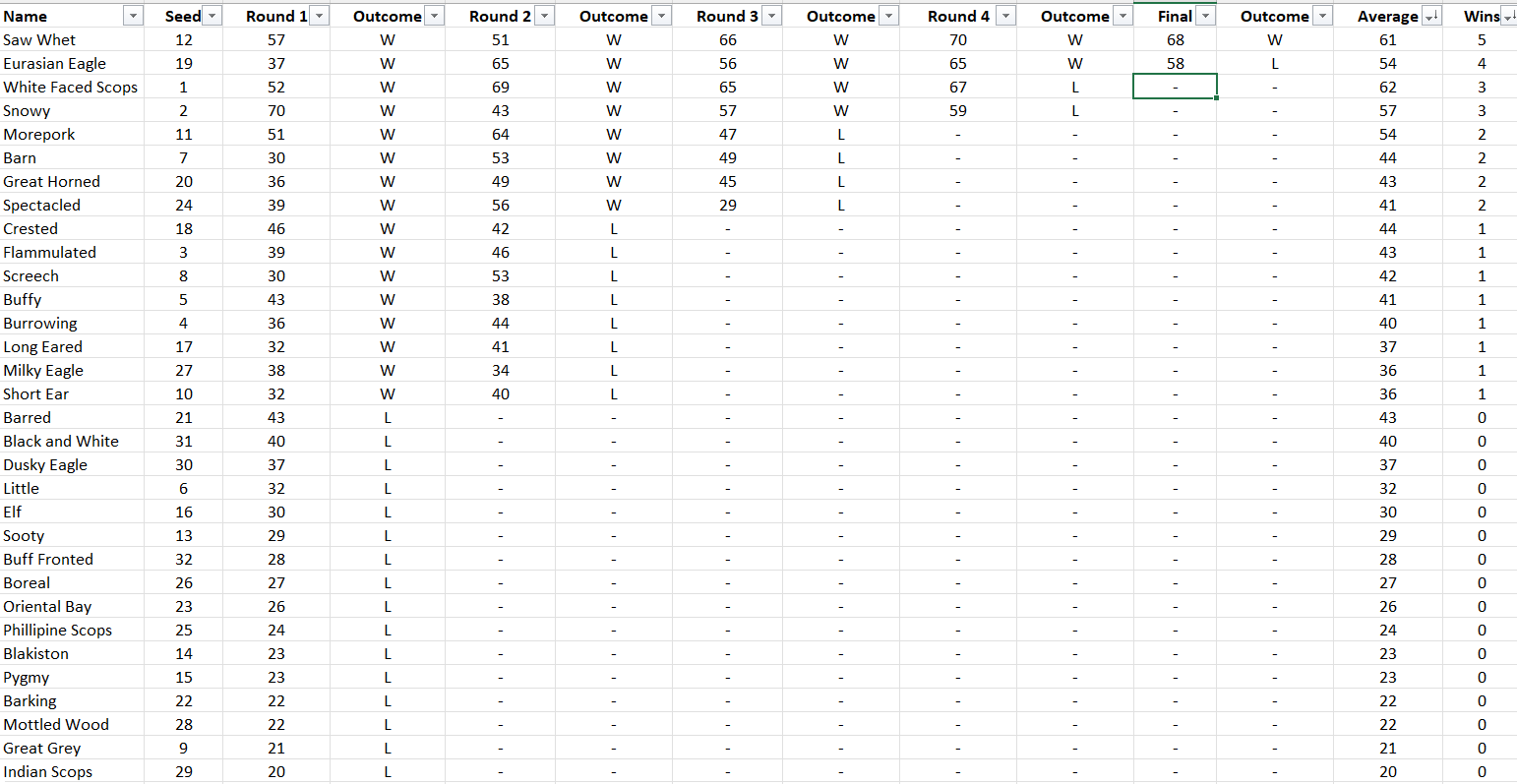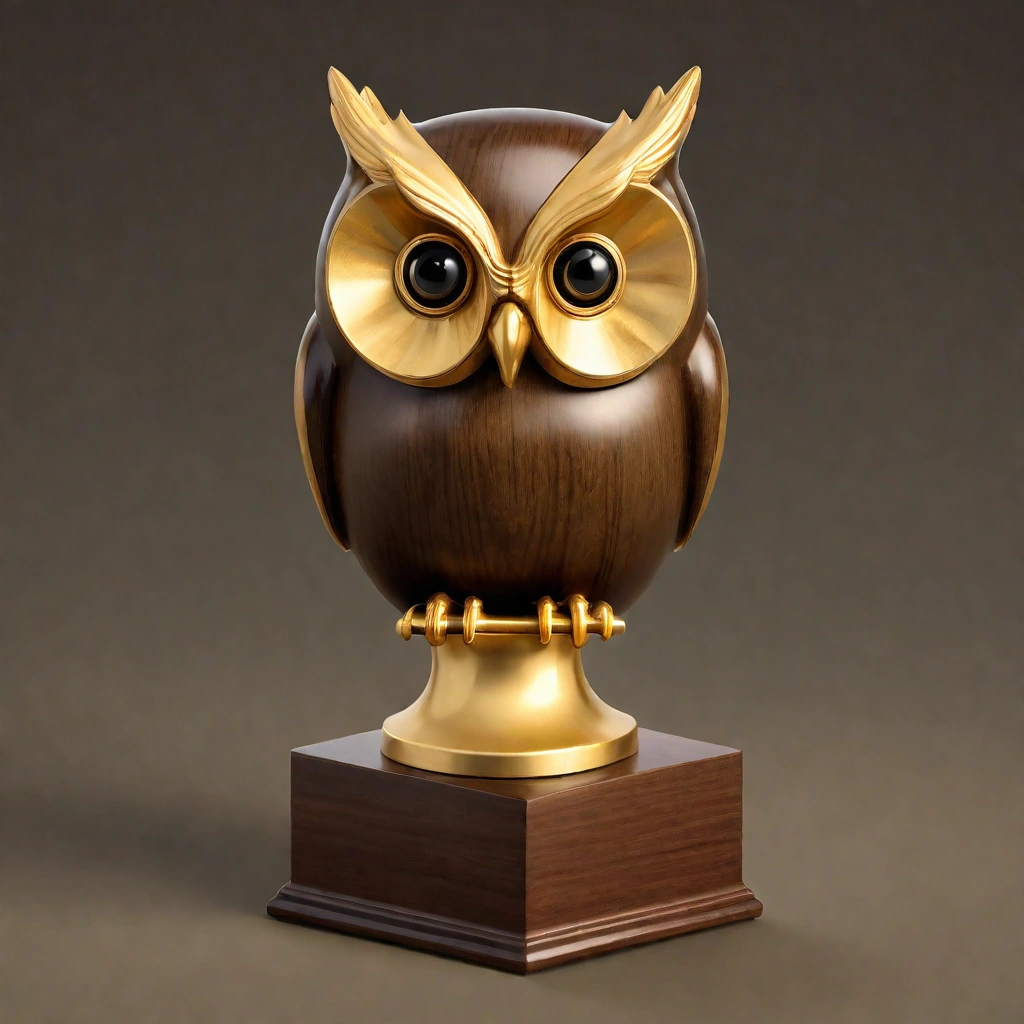
The bracket is made!
I think this year's lineup is an improvement over last year. Based on what I've seen, all the opening matches look very competitive. My goal was to fix some of the lop-sided wins we had, and I'm feeling good about how this schedule looks.
There's going to be some tough choices for you guys. Much like last year, I'm glad I don't need to decide, but I'm still going to have to accept some painful loses at some point. I try to keep impartial during the tournament, but I definitely have some personal favorites. Sooty vs GHO is one where I'm not looking forward to saying goodbye to either one.
You guys didn't nominate my beloved Spotted Wood Owl. Buff Fronted got in, which I was happy for, but its first opponent is last year's winner.
I'm excited to see the Battle of the Southern Hemisphere between Australia's Barking Owl and NZ's Morepork.
We've got Eurasia's biggest owls going head-to-head.
Snowy, Burrowing, and Buffy are all up against some flashy newcomers where we could have a surprise victory like the unexpected triumphs the Flammulated Owl had last year,
I think I will start the games Wed, 4 DEC after I get back from some travel. Then we've got a little over 2 weeks of excitement to crown this year's winner. I'll put the final 4 owls in the banner again and the winner gets the icon.
Got a personal favorite you're ready to cheer on to victory?
Let me know which matches you are most looking forward to or dreading the most!




























